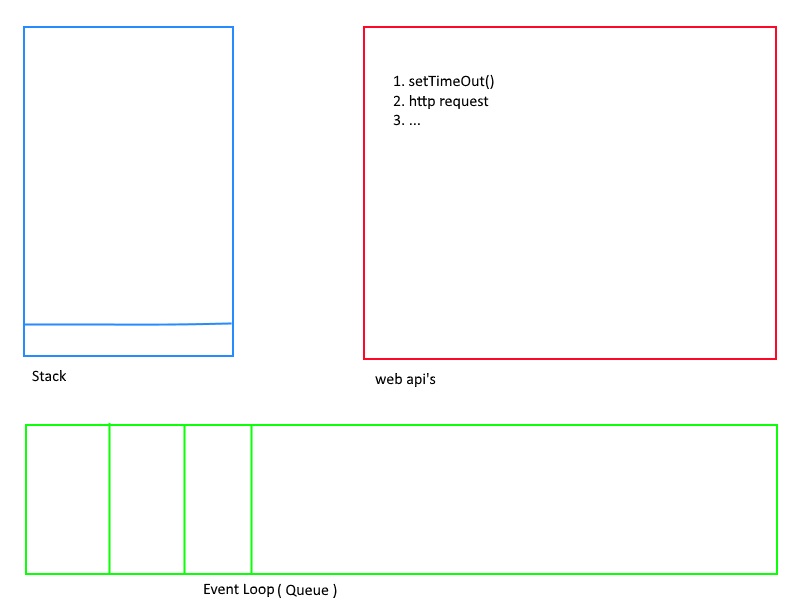Eventloop is one important behavior of a javascript runtime. To be clear on this its a concurrency model of javascript runtime. If you are new to javascript, its advised to get further background about js. I assume readers are familiar with javascript, and some fundamental aspects of browser’s working.
Architecture of JS Runtime
We know that JS is an asynchronous event driven programming language. The term asynchronous means it doesn’t block the execution if a lagging task appears in the execution path.
A lagging task means, any task which may take time to execute, for eg: a function calling an api may take considerably long time than a function executing an arithmetic operation.
eg:
readFileFromServer(function(){
//logic for reading file
alert('File read')
});
alert('Hello World');
In the above example, Hello World will be shown first. Since readFileFromServer
is executed with callback, File Read will be displayed only after Hello World
when the file is actually read and we get a response from the server.
callback()
This is achieved by means of callbacks or callback functions. Lets first see what is a call back function in javascript. It sounds confusing for the first time, but its like pointers in ‘c’, once you get it you will grind it. Let me explain callbacks with an example.
//define callback function
function handlePhoto (location) {
if (location) {
alert('Photo is downloaded to ',location)
}
}
//define download function
function downloadPhoto(url, callback){
var location
/*
download logic
*/
//the variable 'location' stores the downloaded image path
//when the download completes and location is available, it will invoke callback fucntion
callback(location)
}
//envoke download function
downloadPhoto('http://coolcats.com/cat.gif', handlePhoto)
Basically you can assume like passing a function as a parameter. If you are still confused with the code, see the above code if we write it after expanding.
//define download function
function downloadPhoto(url, callback){
var location
/*
download logic
*/
//the variable 'location' stores the downloaded image path
//when the download completes and location is available, it will invoke callback fucntion
callback(location)
}
//envoke download function
downloadPhoto('http://coolcats.com/cat.gif', function (location) {
if (location) { //discards if location is undefined
alert('Photo is downloaded to ',location)
}
})
the execution goes like
First downloadPhoto(... , ...) is invoked, with two parameters first, a string;
second, a function upon completing downloadPhoto, instead of return statement we have callback,
which will invoke the function that is passed as the argument. We checks the
location variable, and alerts the location.
Why callback() is cool
Whenever a callback function is executed, it wont block further execution of the program. It will be queued in the back, and continues in main thread once it completes. Now you might be having a question, javascript is said as single threaded executing and what the heck is this callbacks goes to backend. Well to be precise javascript runtime(v8 for google chrome) is single threaded. A browser may contain couple of other components as well, like eventloop, layout engine, execution stack, webapi’s. All these works together in a particular way, which we simply call a browser.
Eventloop
You can think eventloop as a queue.

- Any function that is to be executed will go to the
stack - Assume we perform a callback with setTimeout()
setTimeout(function callback(){
alert('message displayed after 3 seconds')
},3000)
- We said setTimeout() is actually a part of webapis. Thus execution will go to webapi, that will work in background.
- Now webapi will take care of setTimeout() function.
- Once at least 3 second delay is happened, the
callback()function is ready to execute. - So the
callback()will be pushed to the eventloop queue. - Whenever the stack goes empty, the browser will take a look in the event loop queue.
- If the queue isn’t empty, it will pop that item, and moves it to stack for execution.
- And that function[
callback()] is executed.
Non blocking nature of javascript is the one which keeps it apart from others. For further reading on concurrency model and eventloop refer this